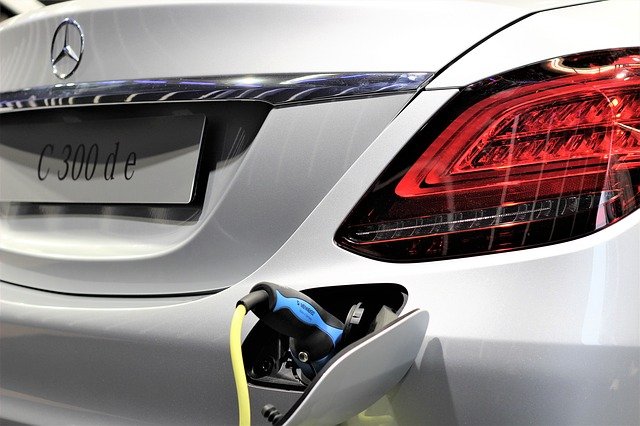
Mercedes-Benz Cars Aims to Slash CO2 Emissions by More Than 50 Percent by End of This Decade
- First ESG Conference presents holistic environmental, social and governance concept along the entire value chain.
- Mercedes-Benz intends to go all-electric until the end of this decade and aims to cut its carbon footprint per passenger car by more than half by 2030 compared with 2020 levels.
- 70 percent of energy needs in production should be covered through renewable energy by 2030.
- Human Rights Respect System: Mercedes-Benz increases transparency and takes appropriate measures in relation to 24 raw materials with an elevated risk.
- Mercedes-Benz aims to have 30 percent women in senior management positions by 2030.
- Variety of green financing instruments and green KPI-linked bilateral funding agreements will be increased.
STUTTGART, Germany–(BUSINESS WIRE)–At its first digital ESG (Environment, Social and Governance) Conference for investors and analysts, the inventor of the automobile announced measures aimed at cutting CO2 emissions, creating lasting value for all stakeholders. As stated at the COP26 UN Climate Change Conference in November 2021, Mercedes-Benz is committed to a faster transition to electric cars. “The desire for individual mobility keeps growing. Our mission is to meet this need in a sustainable way. Mercedes-Benz has a clear roadmap how to become carbon-neutral. By 2030, we want to reach the half-way mark. In order to make faster progress in protecting the climate we need maximum dedication and more collaboration among governments, companies and society as a whole,” says Ola Källenius, Chairman of the Board of Management of Mercedes-Benz Group AG.
The company aims to at least halve CO2 emissions per passenger car over the lifecycle by the end of this decade compared to 2020 levels. To achieve this goal, the key levers include: electrifying the vehicle fleet, charging with green energy, improving battery technology, an extensive use of recycled materials and renewable energy in production. Mercedes-Benz plans to cover more than 70 percent of its energy needs through renewable energy by 2030 by rolling out solar and wind power at own sites as well as through further Power Purchase Agreements.
Electric only – well on the way to zero tank-to-wheel emissions
Electrification of the Mercedes-Benz portfolio has been progressing in leaps and bounds for some time. The aim is to achieve up to 50 percent share of plug-in hybrid and BEVs by 2025 on the way toward going all-electric by 2030 wherever market conditions allow. The portfolio already includes six, and soon nine, all-electric models. To-date, Mercedes-Benz has unveiled the EQA, the EQB, the EQC (WLTP: combined electrical consumption: 25-21,3 kWh/100 km; combined CO2 emissions: 0 g/km)1, the EQS, the EQE 350+ (WLTP: combined electrical consumption: 18,7‑15,9 kWh/100 km, combined CO2 emissions: 0 g/100 km)1 as well as the EQV. Further models will follow: the EQS SUV, the EQE SUV and the EQT. The company plans to assert its leadership in electric mobility among commercial vans, too, through the ongoing electrification of its entire model range.
Green Charging –renewable electricity for electric vehicles
In the lifecycle of an electric vehicle, using renewable energy for charging is a significant lever for helping to avoid CO2 emissions. Mercedes-Benz enables “green charging2” at all of the around 300,000 public charging points in the Mercedes me Charge network throughout Europe and ensures that a sufficient amount of electricity from renewable sources is fed into the grid.
Battery – decreasing carbon footprint through innovative cell chemistry and battery recycling
The battery is the biggest lever for reducing CO2. With the current EU electricity mix, supply chain and production account for more than half of the lifecycle CO2 emissions. This proportion can be reduced significantly through the use of renewable energy. By transitioning to CO2-neutral cell production, it is possible to cut emissions for the production of the entire battery pack by 20 percent. Additional CO2 savings are expected to be achieved through further measures – e.g., by improving the anode and cathode production process. Strategic partnerships have thus been formed to develop and industrialize highly advanced and competitive cell technologies. With more than 800 watt-hours per litre at cell level by mid-decade, high-silicon anodes offer great potential in respect of energy density. At the same time, Mercedes-Benz expects to be able to use LFP batteries in its series-production vehicles. These batteries have a completely cobalt-free cathode. Together with research partners the company is also working on solid-state batteries. To keep control of the battery lifecycle in-house, the company is starting a CO2-neutral recycling factory in Kuppenheim3, Germany, to recycle end-of-life electric vehicle batteries using a new hydrometallurgical technique which increases the recycling rate to 96 percent.
Green steel and Aluminium – pulling out all stops to lower emissions and to support a sustainable future
Mercedes-Benz is setting up a green steel supply chain4 to massively expand its use of low-CO2 and zero‑CO2 steel. Working closely with steel suppliers, the company is consciously steering clear of carbon offsets, focusing instead on the avoidance and reduction of CO2 emissions. In 2021, the company became the first car maker to take an equity stake in Swedish start-up H2 Green Steel (H2GS), with the aim of introducing green steel in a number of production models by as early as 2025. Through the adoption of a circular economy approach, Mercedes-Benz is steadily increasing the proportion of secondary aluminium it uses. Furthermore, it is the first automotive manufacturer to commit to sourcing only primary aluminium certified by the Aluminium Stewardship Initiative (ASI) for its stamping plants and foundries in Europe in future. This confirms that the raw materials are obtained and processed responsibly and in an ecological manner irrespective of the source country — from mining through melting and refining all the way to the gates of the Mercedes‑Benz plants. This requirement will be rolled out to other locations outside Europe in the medium term.
Sustainable materials in series production – now and in the near future
Several sustainable materials are already in series production in some vehicle models. These include seat upholstery fabrics from 100 percent recycled PET bottles as well as floor coverings made with yarns from fishing nets recovered and fabric remnants from old carpets. The EQS and EQE will even feature cable ducting made with recycled landfill waste. Indeed, the components in the EQS, manufactured with efficient use of resources through recycled and renewable raw materials, already weigh more than 80 kilograms. By applying its “Design for Environment” and “Design for Circularity” approaches to the selection of materials, Mercedes-Benz Cars aims to increase the use of recycled materials per vehicle by 2030 to 40 percent.
The bigger picture – Environmental, Social and Governance responsibility go hand in hand
Mercedes-Benz has been producing CO2-neutrally in all own plants as of this year. In addition, the company aims to further expand production of renewable energy by rolling out solar and wind power at all sites.
Mercedes-Benz has a holistic concept of ESG across all departments. The transition to CO2-neutrality and the associated expansion of electric mobility bring many challenges, including those relating to raw materials such as cobalt or lithium, and supply chains. As part of the risk-based Human Rights Respect System Mercedes-Benz increases transparency and takes appropriate measures in relation to 24 raw materials with an elevated risk. The corporate ambition is to ensure that human rights are respected along the entire supply chain: from the mines where raw materials are obtained to the processing companies, and finally to own production.
Along with sustainability and integrity, diversity forms the foundation of the sustainable business strategy of Mercedes-Benz. The company is convinced that sustainable success can only be achieved with diverse teams. One area of action for Diversity & Inclusion Management is the advancement of women. They make up the equivalent of 37.5 percent of the Board of Management of Mercedes-Benz Group AG: Three of the eight members of the Board. Mercedes-Benz wants more qualified women in senior management positions and is aiming for a share of 30 percent in 2030.
The shift towards climate neutrality is changing the financial world and green financing is gaining in importance. Therefore, the variety of green financing instruments like “Green ABS” and green KPI-linked bilateral funding agreements will be increased. Mercedes-Benz also expects a significant increase in EU taxonomy aligned CapEx until 2026 in accordance with its all-electric strategy. Analysis of the ESG ratings of Mercedes-Benz is an important aspect to identify and close transparency gaps. In 2021, the company was able to significantly improve those ESG ratings.
For a replay of the digital ESG Conference please have a look at the Mercedes me media online platform.
Further information about Mercedes-Benz is available at www.mercedes-benz.com. Press information and digital services for journalists and multipliers can be found on our Mercedes me media online platform at media.mercedes-benz.com as well as on our Mercedes-Benz media site at group-media.mercedes-benz.com. Learn more about current topics and events related to Mercedes-Benz Cars & Vans on our @MB_Press Twitter channel at www.twitter.com/MB_Press.
Mercedes-Benz AG at a glance
Mercedes‑Benz AG is responsible for the global business of Mercedes‑Benz Cars and Mercedes‑Benz Vans, with around 172,000 employees worldwide. Ola Källenius is Chairman of the Board of Management of Mercedes‑Benz AG. The company focuses on the development, production and sales of passenger cars, vans and vehicle-related services. Furthermore, the company aspires to be the leader in the fields of electric mobility and vehicle software. The product portfolio comprises the Mercedes‑Benz brand with the brands of Mercedes‑AMG, Mercedes‑Maybach, Mercedes‑EQ, G‑Class as well as products of the smart brand. The Mercedes me brand offers access to the digital services from Mercedes‑Benz. Mercedes‑Benz AG is one of the world’s largest manufacturers of luxury passenger cars. In 2021 it sold around 1.9 million passenger cars and nearly 386,200 vans. In its two business segments, Mercedes‑Benz AG is continually expanding its worldwide production network with around 35 production sites on four continents, while gearing itself to meet the requirements of electric mobility. At the same time, the company is constructing and extending its global battery production network on three continents. As sustainability is the guiding principle of the Mercedes‑Benz strategy and for the company itself, this means creating lasting value for all stakeholders: for customers, employees, investors, business partners and society as a whole. The basis for this is the sustainable business strategy of the Mercedes‑Benz Group. The company thus takes responsibility for the economic, ecological and social effects of its business activities and looks at the entire value chain.
1 The WLTP electrical consumption has been determined on the basis of Regulation (EU) No. 2017/1151.
2 Press Release: “Mercedes me Charge: Mercedes-Benz drives electric mobility forward with simplified charging rates”
3 Press Release: : “Mercedes-Benz establishes sustainable battery recycling: Own recycling plant to start in 2023”
4 Press Release: “Mercedes-Benz to use green steel in vehicles in 2025, reducing its carbon footprint”
Contacts
Miriam Weiss, phone: +49 (0) 160 86 28 913, miriam.weiss@mercedes-benz.com
Alexander Helf, phone: +49 (0) 176 30 91 6593, alexander.helf@mercedes-benz.com
Andrea Berg, phone: +1 917 667-2391, andrea.a.berg@daimler.com



